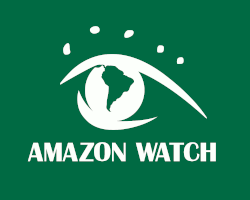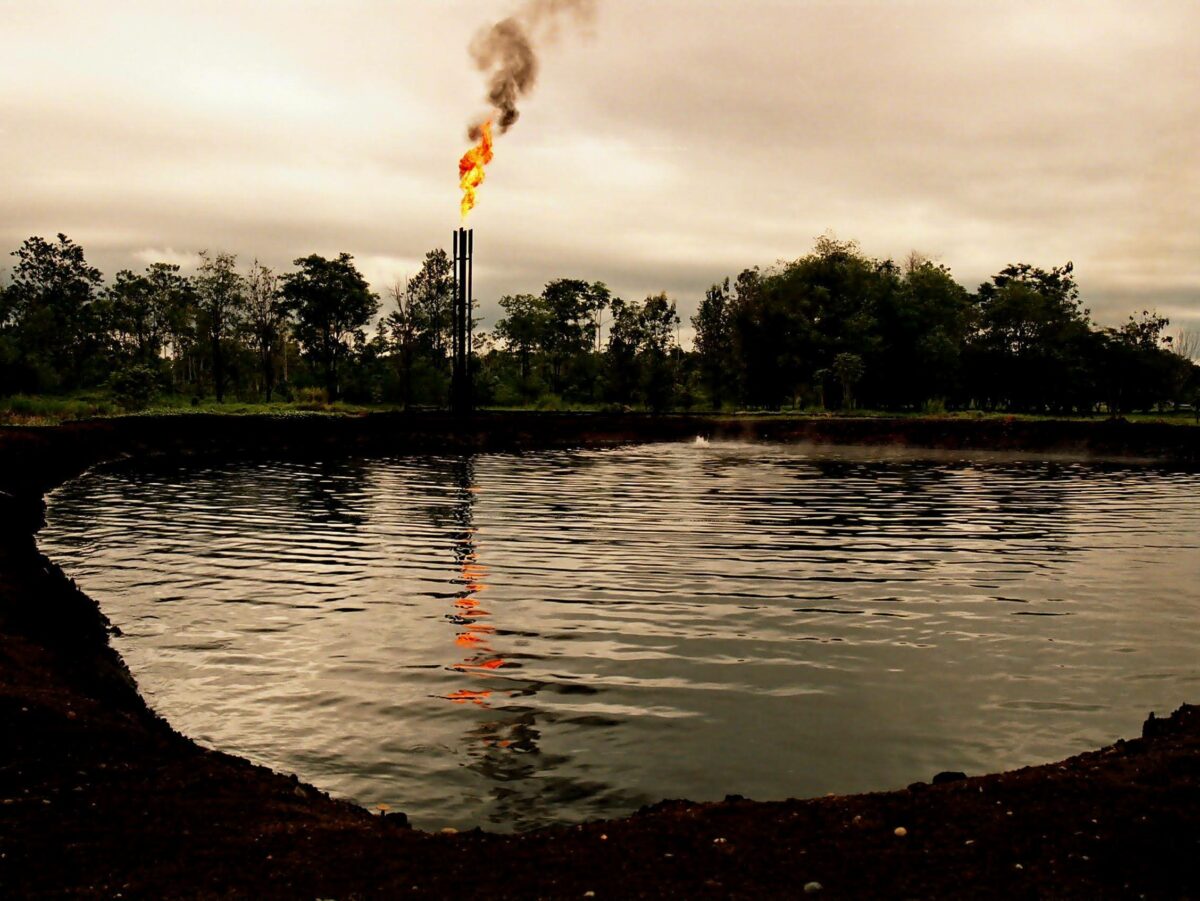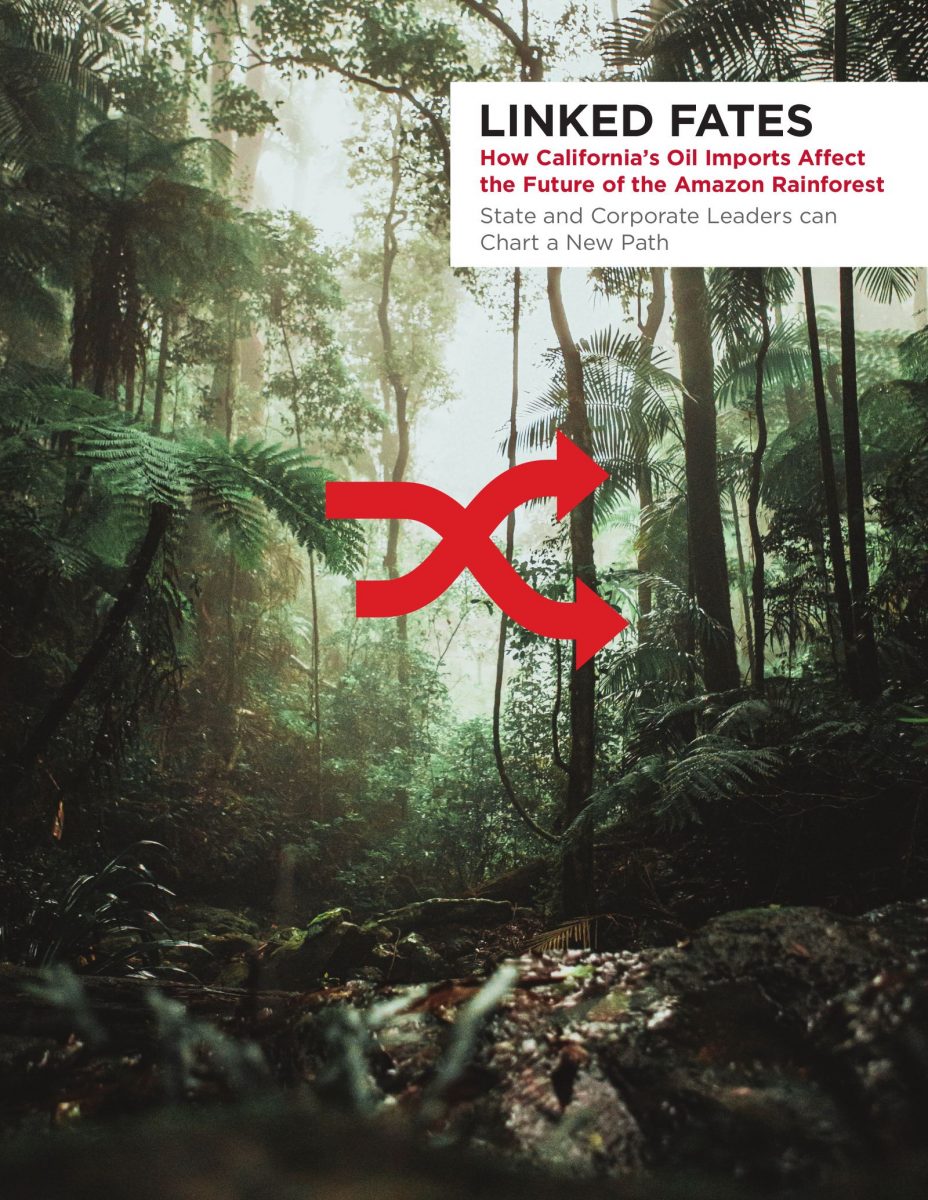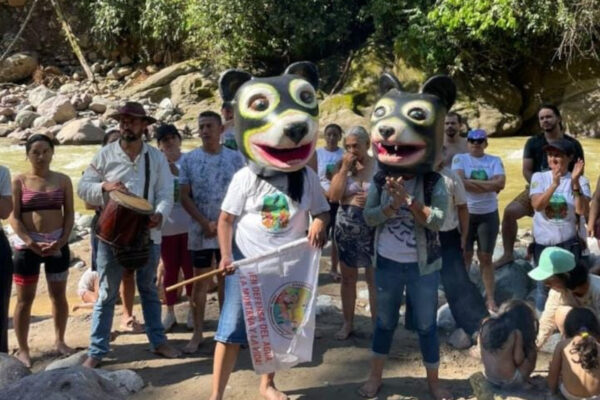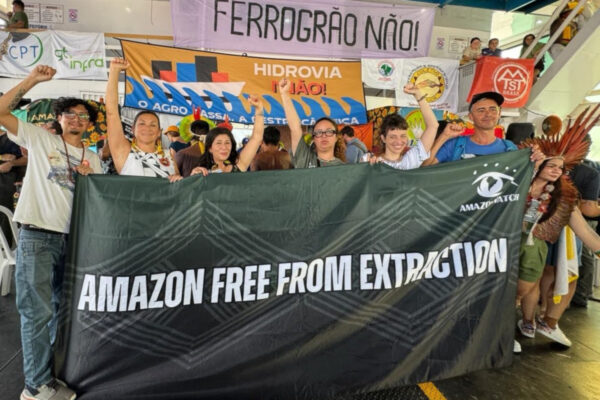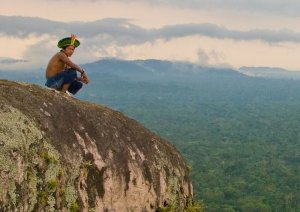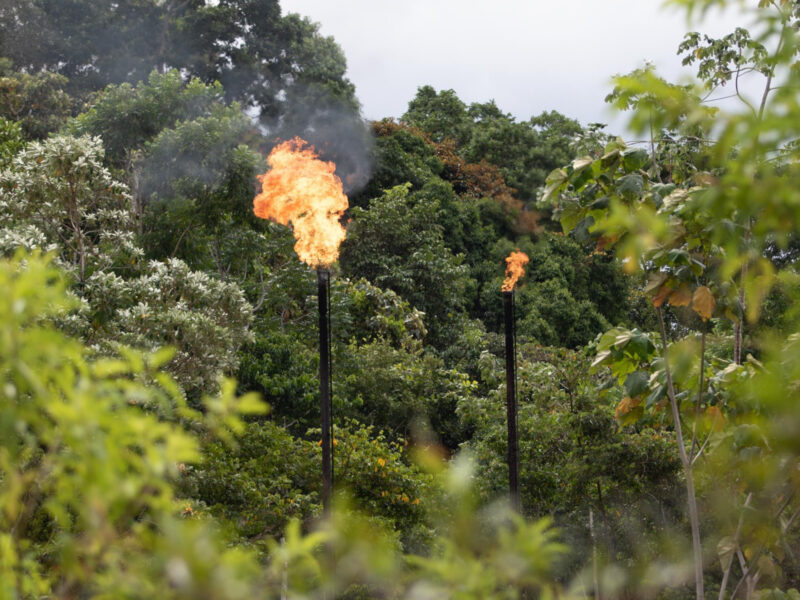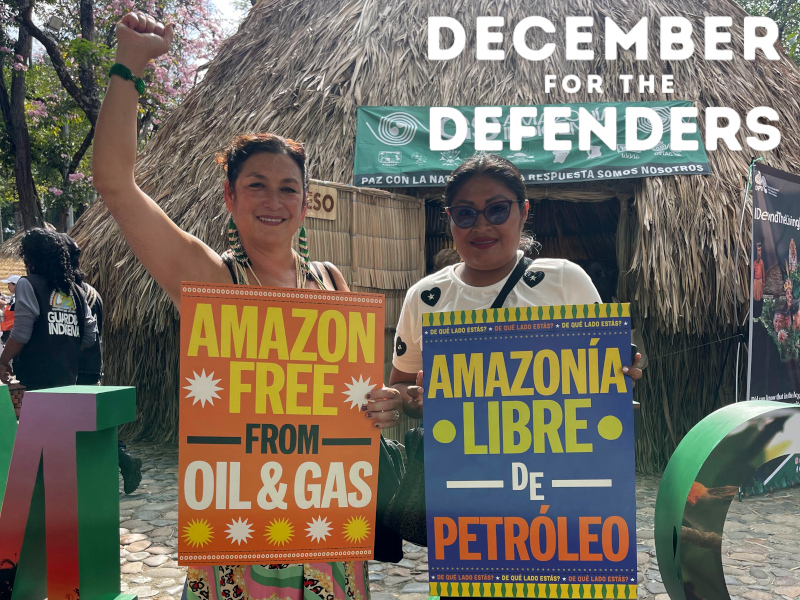New research from Stand.earth and Amazon Watch shows that California is the world’s largest consumer of oil from the Amazon rainforest. Linked Fates: How California’s Oil Imports Affect the Future of the Amazon Rainforest shows in detail how California converts 50% of the Amazon oil exported globally into fuel for airports, corporations such as Amazon.com, trucking fleets such as PepsiCo, and retail gas giants such as COSTCO. This new investigation expands upon our previous research to end Amazon crude, honing in on government and corporate targets. This adds an additional arsenal of targets building off of our long-term finance campaigns against complicit asset managers and banks.
In Amazon Watch’s over 25 years of resistance against Amazon destruction in solidarity with Earth defenders, keeping it in the ground and ending Amazon crude has been central to our rallying cry. We published From Well to Wheel: The Social, Environmental, and Climate Costs of Amazon Crude in 2016 and it was the first thorough analysis of Amazon crude from its source to its final end use. The report tracked crude extracted from oil wells in the western Amazon to refineries in the United States, after which it makes its way into cars and trucking fleets throughout the country. This new report picks up where we left off.
Linked Fates further defines the ways in which Amazon crude destroys the environment, violates human rights at every step of the supply chain, and affects our climate’s future. When extracted, it affects the ancestral territories of Indigenous communities – the world’s best protectors of the rainforest and its vast biodiversity. In the Amazon, the oil industry causes deforestation and pollution, violates Indigenous peoples’ rights, and spreads corruption. En route to destinations like the U.S. or Europe, it pollutes waterways and our oceans. When it arrives, it is refined in the backyards of “fenceline” communities that are often low-income. Black, Indigenous and People of color, are more likely to live near refineries and industry as well. While this research focuses on California’s outsized role, with the rainforest at the tipping point, ending Amazon crude will require us all to take swift action and demand accountability.
“Oil drilling in our Amazon has brought contamination, disease, deforestation, destruction of our cultures, and the colonization of our territories. It is an existential threat for us and violates our fundamental rights as Indigenous peoples. We are calling for an end to all new extraction on our lands, and as our ancestors and science now affirm, we must keep fossil fuels in the ground, in accordance with the commitments of the Paris Agreement and at COP26 in Glasgow.”
Nemo Andy Guiquita, Waorani Indigenous leader of Women and Health of CONFENIAE
The Oil Flow
Our research reveals that an average of 89% of the annual crude oil exported from the Amazon comes from Ecuador. 67% of that goes to the United States. 1 in 9 gallons of fuel pumped in 2020 in California come from the Amazon, and in Southern California, the average is 1 in 7 gallons. The Los Angeles International Airport consumes more oil from the Amazon than any other airport in the world – an average of 1 in 6 gallons of jet fuel pumped at LAX comes from the Amazon.
Well-known brands such as Marathon, Chevron, and Valero are the top three refiners of oil from the Amazon, all located in California. Of the Amazon crude that goes to the U.S., 27% goes to Marathon, 22% goes to Valero, and 17% goes to Chevron. We’ve campaigned against Chevron’s pollution in Ecuador for decades, known as its “Amazon Chernobyl,” so it is notable that Chevron continues to have a role in rainforest destruction. Even though our partners were victorious in their lawsuit for this pollution, the corporation has yet to be held accountable. Chevron has gone as far as criminalizing one of the lead lawyers, Steven Donziger, who is now serving a six-month prison sentence as a result of a strategic lawsuit against public participation (SLAPP suit). To date, the company has spent nearly $2 billion fighting its court-ordered mandate to pay $9.5 billion in cleanup and community reparations costs that it is responsible for in Ecuador. Indigenous communities remain affected.
Companies named in the report who use Amazon oil – such as American Airlines, Delta, PepsiCo, Amazon.com, Walmart, COSTCO, Arco, and Chevron – are responsible for eliminating fossil fuels and the destruction it’s tied to. Therefore, corporate leaders need to call for no new oil expansion in the Amazon, develop fuel sourcing policies that are transparent and traceable, and set aggressive goals for electric vehicle use and other strategies designed to reduce fossil fuel consumption.
Leadership from government officials is key, especially if California wants to maintain its progressive image as a trailblazer on climate action. They have an obligation to end California’s dependency on Amazon crude through new policies, regulations, and commitments. They must commit California to a policy and regulatory agenda that ensures that California is not contributing to the expansion of oil drilling in the Amazon. Further, they must create a multi-agency commission to map out how the state can achieve this goal – without any increase of domestic Californian production. Government leaders must then develop a plan for California to reduce and/or eliminate its consumption of crude from the Amazon and ban new domestic production within 3200 feet of buffer areas. Finally, they must commit California to new fuel efficiency standards, push for electrification of fleets that consume the most Amazon oil, achieve broad expansion of EVs, and set public transportation goals to reduce domestic consumption equivalent to Amazon oil import totals.
On the ground urgency
Our report comes at a crucial moment for Indigenous peoples on the ground in Ecuador. They are facing down plans by President Guillermo Lasso to double oil extraction over the next five years. That means expansion plans inside Yasuni National Park, where plans to build 600+ wells are underway, and a new oil road is only 400 meters away from the protected are for the Tagaeri and Taromenane, two Indigenous peoples living in isolation.
The Lasso government has also announced it will put up a dozen new oil concessions for auction in 2022. These blocks cover almost 7 million acres of largely roadless, intact rainforest and the titled territories of seven Indigenous nationalities who have adamantly opposed extraction activities on their lands.
Our Indigenous partners have long called for the end of oil extraction on their territories. They have successfully resisted many oil projects, while battling the expansion of others. They have known what the world is just now reckoning with: the fossil fuel era is over. In our role as a solidarity organization, we share this research with you as a great accomplishment, years in the making, demonstrating that we will not leave a strategic lever unturned to end Amazon crude.
As an NGO based in the U.S. and specifically in California, this investigation is a groundbreaking report that pushes us to tangle with our complicity – but it also reminds us that change happens at a higher level than we can take on alone as individuals. We hold so much power as consumers, beyond boycotting any one brand. We must come together because our fates are linked, from the U.S. to the Amazon. We’re going to need a united movement to hold a new range of decision makers accountable. Will you join us?
Where does the Amazon crude go?
- 123 MILLION GALLONS of jet fuel from the Amazon rainforest was consumed by major airlines at LAX and SFO in 2020. The top airlines are American Airlines, Delta, United, Southwest, and Alaska Airlines.
- 13 MILLION GALLONS of diesel from the Amazon rainforest was consumed by food and beverage delivery services in 2020. The top companies are PepsiCo, Sysco, U.S. Foods, Reyes Holdings, and UNFI.
- 39 MILLION GALLONS of diesel from the Amazon rainforest was consumed by parcel delivery services in 2020. The top companies are Amazon.com, UPS, and FedEx.
- 43 MILLION GALLONS of diesel and gasoline from the Amazon rainforest was consumed by major supermarkets for their fleets and retail fuel stations in 2020. The top supermarkets are Walmart, Costco, Kroger, and Albertsons/ Safeway.
- 1.9 BILLION GALLONS of gas and diesel from the Amazon rainforest was sold by major oil companies in California in 2019. The top retailers include Arco, Chevron, Shell, 76 (Phillips 66), and Valero. Unbranded gas is the largest share of gas sold in the state, illustrating that real change will require state action to reduce gasoline consumption, not just actions by brands.
